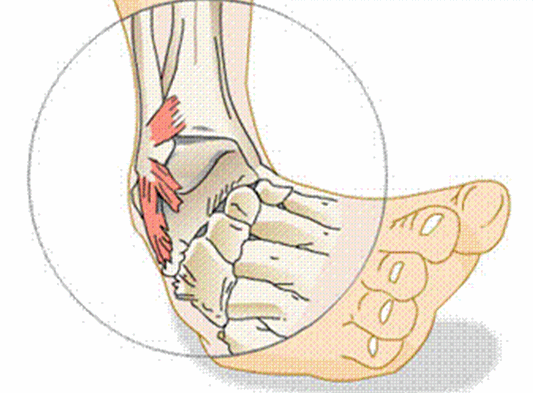
Chiropractic
Acupuncture
Custom Orthotics
Orleans' Top Rated Chiropractors / Chiropractic Clinic
Experts helping you recover from pain and injury
What to Expect
Every appointment begins with a thorough history and examination. Once we have established the correct diagnosis, we will go over treatment options.
Our approach to foot care is non-invasive - that means no surgeries or injections. Instead, we focus on the best conservative care options.
Two major hurdles to recovering from foot pain and injury are poor foot mechanics, and poor circulation. To address these issues we often recommend some combination of:
-
Manual therapy (massage, mobilization, and manipulation) to restore proper muscle, tendon, and joint movement.
-
Acupuncture to reduce pain, improve nerve functioning, improve circulation, and promote healing.
-
Rehabilitative Exercise to strengthen weak muscles, restore coordination, and improve circulation.
-
Red Light Therapy to improve the circulation and healing.
Conditions

Plantar Fasciitis and Achilles Tendonitis
Plantar fasciitis is the most common foot condition we treat, and is essentially a tendonitis of the plantar fascia where it attaches to the calcaneus (heel bone). It is characterized by:
-
Pain that is often worse first thing in the morning
-
Pain easing with mild activity or stretching of the foot
-
Pain when pressing into the arch of the foot, usually worst at the attachment to the heel bone.
Achilles tendonitis is another tendonitis that is often found alongside Plantar Fasciitis. Both conditions are often caused by the same factors, such as recent weight gain, change in activity level, or poor foot and ankle mechanics, such as very high or very low foot arches.
These are both conditions that tend to respond very well to treatment, however they can turn into chronic conditions if left untreated. Treatment usually consists of manual therapies, heat (yes, heat, not ice), and rehabilitative exercise. The goal is to strengthen and restore functioning to the tendons.

Neuropathic Pain
Neuropathic foot pain is often the result of another underlying condition, such as diabetes. It is important to remember that the underlying cause of the pain can dictate the response to treatment.
It is usually characterized as
-
Burning or aching pain in the feet or toes
-
Not easily relieved
-
Usually worst when resting or trying to sleep.
Neuropathic pain can be the most difficult to treat, however there is good researching showing the benefits of acupuncture and red light therapy in the treatment of neuropathic pain.

Ankle Sprains
Ankle sprains are an injury that almost everyone will suffer at some point in their life. While many ankle sprains are minor and don't require treatment, for many people, it is an initial injury that ends up leading to chronic or recurring ankle pain.
It is usually characterized as
-
Lateral ankle pain that follows an invasion or "rolling" of the ankle joint.
-
swelling and/or bruising around the outside of the foot or heel.
-
Pain with weight bearing and walking.
-
A sever ankle sprain can be very debilitating. We use the "Ottawa Ankle Rules" to determine if your ankle injury requires x-rays or not, and if not, will usually progress to treatment that usually consists of manual therapies, heat (yes, heat, not ice), and rehabilitative exercise. The goal is to strengthen and restore functioning to the ankle and associated muscles as soon as possible.

Mortons Neuroma
Mortons Neuroma is a nerve pain that is usually felt between the 3rd and 4rd metatarsals of the foot (the bones your toes attache to). It is more common in women but can affect men as well. Usually the results of poor foot mechanics and/or tight fitting shoes, it often responds well to, rest, change in foot wear, custom orthotics, and some light manual therapies.

Pes Planus, Bunions, etc.
Pes Planus or Flat Feet is a flattening of the medial longitudinal arch of the foot. Is can be caused by genetic conditions or weakening of the foot and associated muscles of the foot and ankle. While generally not a problem on its own, it is the most common biomechanical problem we see and is a major contributor to many issues from Bunions, all the way up to hip and back pain.
When walking, ideally you step down with your heel and the arch drops a little but doesn't flatten all the way. Then as you prepare to "toe off" the bending of your big toe pulls on the plantar fascia, which increases the arch height of the foot, preparing for the next step.
This spring like action allows the foot to absorb deliver force as you walk, and keeps everything from your big toe, to you ankle and knee in the correct position. When the arch fails to act like a spring, it creates more stress on the big toe often contributing to a bunion. It can also allow the entire foot and ankle to pronate, casing the knees buckle towards the middle, causing conditions like anterior knee pain and even hip and back issues.
Treating Pes Planus and Bunions conservatively often relies on custom foot orthotics and/or exercises, depending on the severity of the condition and the age of the patient.

Arthritis, Metatarsalgia, etc.
Because of the feet and ankles take the entire weight of the body, thousands of times a day, they are very prone to arthritis. This is often caused by poor strength and mobility, resulting in reduced joint movement of the 26 bones and 33 joints of the feet.
Treating arthritis usually requires manual therapies to restore the normal movement of the joints, exercises to strengthen and coordinate those joints, and acupuncture and/or red light therapy to improve the circulation to the feet.




